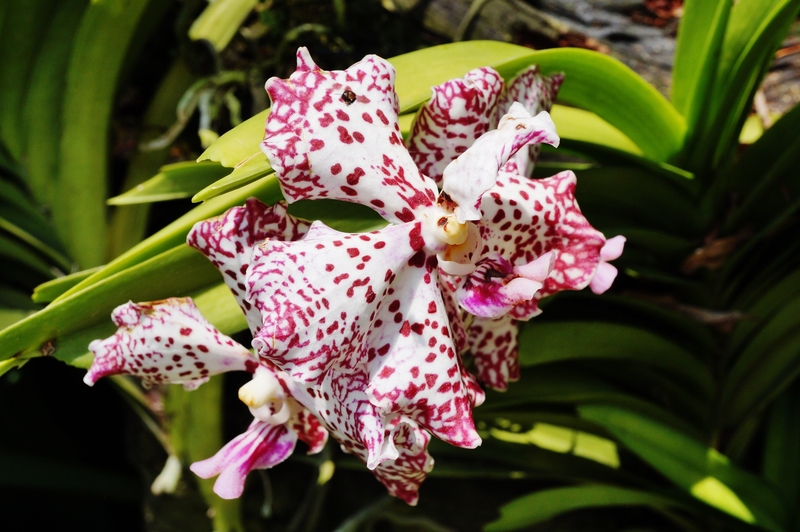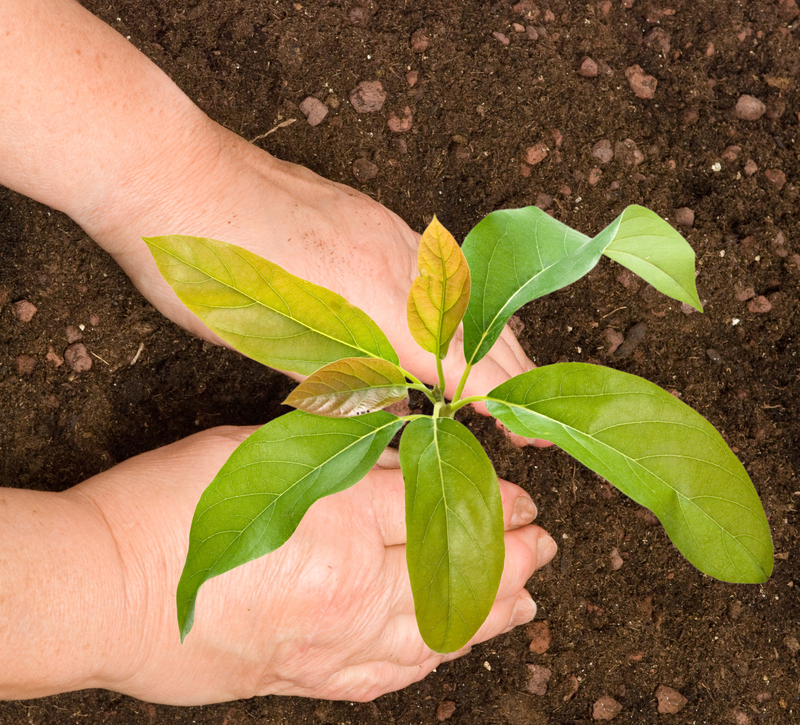Keeping Your Garden Beautiful with Dog Companions
Posted on 25/05/2025
Keeping Your Garden Beautiful with Dog Companions
Your garden is more than just a patch of earth--it's a sanctuary, a place of peace, and a haven for both you and your four-legged friends. Many dog owners struggle to maintain a lush, thriving garden while sharing space with their playful canine companions. However, keeping your garden beautiful with dog companions is not only possible, but enjoyable and rewarding with the right strategies.
In this in-depth article, we will explore dog-friendly gardening tips, highlight the best landscaping choices, suggest dog-proof plants, and provide actionable solutions for maintaining the beauty of your garden with dogs. Whether you have a boisterous puppy or a calm older dog, you'll find plenty of advice to create a harmonious garden-dog relationship!
Understanding The Challenges: Dogs in the Garden
Before we dive into solutions for keeping your garden beautiful with dog companions, it's essential to understand how canine behavior impacts your landscape. Dogs are naturally curious, love to dig, and see the garden as an extension of their play area. The most common challenges include:
- Digging up flower beds
- Urinating on grass and plants, causing yellow spots
- Trampling delicate plants and paths
- Chewing ornamental flowers or shrubs
- Spreading garden mulch everywhere
Understanding these issues is the first step in designing a dog-friendly garden that remains attractive and functional.

Dog-Proofing Your Garden: Creating Harmony
1. Designate Dog Zones
Setting boundaries within your garden is key to balancing your dog's needs with your own horticultural ambitions. Dedicate specific areas for your dog to play, roam, or relax, which may include:
- A shaded spot with soft ground cover for lounging
- A mulch-free digging pit to satisfy digging instincts
- Wide, clear paths for safe running and chasing
Encourage your dog to spend time in these zones using toys or treats. This approach can significantly reduce unwanted damage elsewhere in the garden.
2. Protective Pathways and Hardscaping
Dogs instinctively follow familiar routes, often along fences or garden edges. Install sturdy pathways using materials like gravel, flagstone, or paving slabs. These paths can:
- Protect your lawn
- Guide your dog away from delicate flower beds
- Add an aesthetic element to your landscape
Pro tip: Raised beds and sturdy edging can further help keep pups from wandering into off-limits areas or trampling your flowers.
3. Selecting Dog-Proof and Safe Plants
Some garden plants are toxic to dogs, while others are more resilient to canine antics. When keeping your garden beautiful with dog companions, select plants that are both safe and durable:
- Dogsafe plants: Sunflowers, marigolds, snapdragons, sage, rosemary, and ferns
- Ground covers: Irish moss, creeping thyme, or clover are soft, resilient, and safe for most dogs
- Avoid: Toxic plants like lilies, azaleas, foxglove, and sago palm
Always research plants before adding them if you share your living space with curious canines.
The Art of Training: Educating Your Dog for Garden Etiquette
Good gardening with dogs is not just about design--it's about consistent training and positive reinforcement. Teach your dog basic garden manners using these tips:
- Use clear boundaries and reward your pet for respecting "no-go" areas
- Redirect digging behavior to a designated pit
- Practice recall and "leave it" commands to stop unwanted chewing or trampling
- Supervise outdoor play until your dog learns acceptable garden behaviors
Remember: Patience, consistency, and praise are the keys to a well-mannered garden companion.
Dealing with Dog Damage: Repair and Prevention Tips
Addressing Digging and Bare Patches
If your dog has already created craters or bald spots in your lawn, it's fixable! Try these steps for rapid repair:
- Level out the soil and reseed with a hardy grass variety suitable for high foot traffic
- Fertilize gently and keep the area moist until new grass is established
- Install physical barriers (such as chicken wire or decorative fencing) until the area recovers
For persistent diggers, a sandbox or designated digging area can divert attention from your favorite flower beds.
Solving Lawn Burn from Dog Urine
Dog urine, rich in nitrogen, can cause unsightly yellow patches on lawns. Combat this by:
- Training your dog to use an out-of-the-way spot for toileting
- Watering the area immediately after your pet urinates to dilute nitrogen concentration
- Switching to more resilient grass species such as perennial ryegrass or fescue
Regular garden maintenance and prompt attention to "accidents" will help your lawn stay green and fresh.
Incorporating Dog-Friendly Features
Smart Garden Fencing
While fences may feel restrictive, they can beautifully compartmentalize your outdoor space. Strategic fencing can:
- Protect sensitive flower beds or vegetable patches
- Define play zones for your dog
- Keep your garden design intact and visually appealing
Select fencing materials and designs that blend with your landscaping style for a seamless look.
Pet-Safe Mulch and Surfaces
Not all mulches are created equal. Cocoa mulch, for instance, is toxic to dogs. Opt for safer options:
- Cedar or pine bark: Natural and less likely to be ingested
- Pea gravel: Comfortable for paws, low-maintenance, and discourages digging
- Rubber mulch: Durable, cushioned, and often made from recycled materials
Avoid sharp or chemically-treated mulches that may harm your furry friend.
Water Features and Shade
Many dogs love cooling off outdoors. Installing a shallow water feature or splash pool adds fun and helps your dog stay hydrated. Plant trees or build pergolas for ample shade--protecting both pets and tender plants from heat stress.
Gardening Activities for You and Your Dog
Why not transform gardening into a bonding activity? Here are some ways to include your dog in gardening routines:
- Let your dog "help" with harmless chores like carrying small garden tools or fetching items
- Hide treats around the garden for your dog to find while you weed or plant
- Train your dog to stay calmly nearby while you work, enjoying the sights, sounds, and fresh air together
This not only keeps your dog engaged but also makes gardening more enjoyable for both of you!
Pest Control: Safeguarding Your Garden and Your Pets
Choose Pet-Safe Products
Avoid chemical pesticides, herbicides, and fertilizers if your dog has access to the garden. Even small amounts can be dangerous. Instead, try these safer alternatives:
- Diatomaceous earth for slugs and crawling pests
- Neem oil as a natural insecticide
- Coffee grounds as a mild repellent for some insects and cats
- Manual weeding and mulching for weed control
Always check labels and consult your vet if unsure about any gardening product's safety for dogs.
Discouraging Unwanted Wildlife
Dogs can deter some pests, but they can also inadvertently chase or harm beneficial wildlife. Support garden biodiversity by:
- Supervising your dog's interaction with visitors like birds and butterflies
- Installing bird feeders or baths at heights dogs cannot reach
- Teaching your dog to avoid digging in areas where pollinators are active
Balancing Beauty and Practicality: Embracing Your Unique Garden
Your home landscape doesn't have to look like a botanical garden to be beautiful. The key to keeping your garden beautiful with dog companions lies in flexibility, creativity, and love. Consider the following:
- Embrace a relaxed, cottage-style garden: Wavy borders and lush ground covers can mask minor wear-and-tear
- Opt for container gardening: Raised pots and planters keep delicate plants out of harm's way
- Celebrate imperfection: Occasional paw prints and playful paths are a testament to a happy life shared with your furry friend

Frequently Asked Questions on Gardening with Dogs
- Can dogs and a beautiful garden co-exist? Absolutely--with thoughtful design, training, and patience.
- What ground cover is best for dog owners? Clover, creeping thyme, and hardy grasses resist damage from paws and eliminate muddy spots.
- How can I protect flower beds from my dog? Use raised beds, decorative barriers, and positive training to communicate "off-limits" zones.
- Are fertilizers safe for dogs? Many chemical fertilizers and pesticides are toxic. Use organic, pet-safe versions and keep dogs away until products have absorbed and dried.
Conclusion: Flourishing Together in Your Dog-Friendly Garden
With a thoughtful approach to garden design, plant selection, and pet training, keeping your garden beautiful with dog companions is more than achievable--it's a joy. By understanding your dog's needs, adapting your gardening style, and choosing resilient, pet-safe solutions, you'll cultivate an outdoor space where everyone thrives together. So grab your trowel and your pup, and start creating the garden of your dreams!
Ready to transform your outdoor space? Begin today, and discover the delight of sharing a stunning and safe garden with your loyal canine companion.

